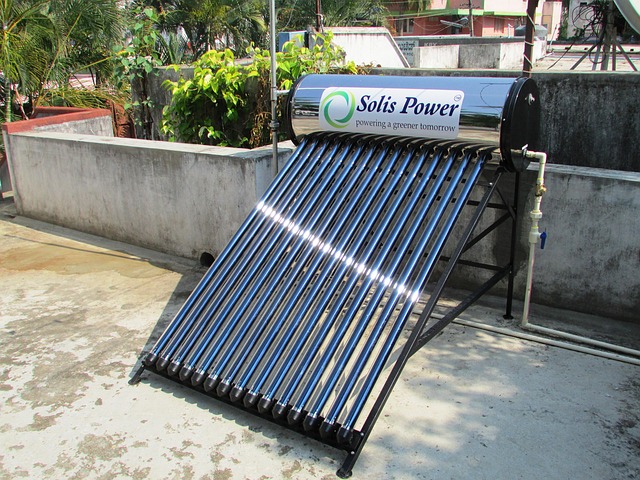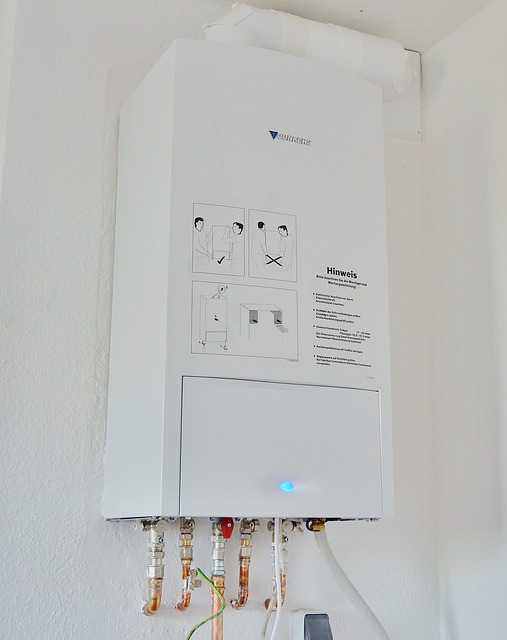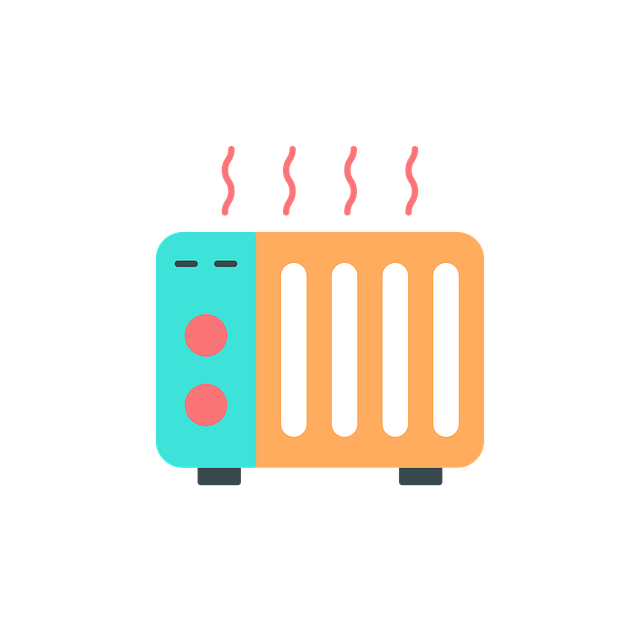Water heater installation is a DIY project with significant financial benefits, offering energy efficiency and longevity. Before installing, consider demand, capacity, space, connection, and sustainability goals. The process involves draining old heaters, preparing new tanks, securing connections, and setting temperatures. Avoid common mistakes like improper knowledge or size misalignment for safe, efficient operation. Regular maintenance, including corrosion checks and flushing, extends heater life and boosts efficiency. Optimize energy usage with temperature adjustments and insulation. Choosing the right tank size ensures consistent hot water supply while minimizing costs. Prioritize safety through professional installation, proper connections, ventilation, and regular inspections for risk mitigation.
“Looking to upgrade your home’s hot water system without breaking the bank? Affordable tank water heater installation is a smart choice, offering both cost savings and improved efficiency. This comprehensive guide covers all you need to know, from understanding basic tank water heaters to choosing the right size for your space. Learn about the benefits of seamless installation, crucial factors to consider, and common mistakes to avoid. Discover expert tips for maintenance and energy efficiency, ensuring optimal performance for years to come.”
Understanding Tank Water Heaters: A Basic Guide

Water heater installation is a common home improvement project, and tank water heaters are one of the most popular types for good reason. These heaters store hot water in a reservoir, allowing for on-demand access to hot water for various household needs. Understanding their basic components and functionality is essential when considering a water heater installation.
Tank water heaters typically consist of an insulated tank, heating elements, a temperature control mechanism, and a drain valve. The tank stores the hot water, while the heating elements, usually electric or gas-powered, heat the water inside. The temperature control adjusts the desired water temperature, ensuring it remains safe for use. When you turn on a tap or use an appliance requiring hot water, the heater activates to provide instant, hot water supply. This convenient and efficient system makes tank water heaters a reliable choice for households, offering a cost-effective solution for your hot water needs.
Benefits of Affordable Installation for Your Wallet

When it comes to water heater installation, opting for an affordable solution can significantly benefit your wallet in numerous ways. Firstly, many budget-friendly options are designed with energy efficiency in mind, which translates to lower utility bills over time. These heaters often come with advanced temperature control features that ensure you only heat the amount of water you need, reducing waste and saving money.
Additionally, affordable installation can lead to long-term cost savings by eliminating the need for frequent repairs or replacements. High-quality yet inexpensive models are built to withstand everyday wear and tear, ensuring they last for years with minimal maintenance. This longevity not only saves you from costly repairs but also reduces the frequency of water heater installations, further adding to your financial savings.
Factors to Consider Before Installing a Tank Water Heater

Before installing a tank water heater, several key factors need consideration. First and foremost, assess your home’s hot water demand and ensure the heater’s capacity aligns with your usage patterns to avoid energy wastage. Space availability is another critical aspect; tank-type heaters require specific dimensions for safe installation, so measure your existing or planned storage area accordingly.
Water source connection and drainage are also essential components. Verify that your plumbing system can accommodate the water supply requirements of the new heater and plan for adequate drainage to prevent potential leaks or damage. Additionally, factor in energy efficiency ratings to choose a model that aligns with your sustainability goals, as this will impact both performance and long-term utility costs related to water heating.
Step-by-Step Process of Tank Water Heater Installation

The process of installing a tank water heater is a straightforward DIY project that can save you money and provide hot water on demand. First, turn off the water supply to the existing heater and drain the tank by opening the temperature and pressure relief valve. This ensures a safe working environment during installation. Next, remove the old water heater, taking note of its location and any connections to pipes or electrical wiring. Prepare the new tank by checking that it’s the correct size for your space and needs; ensure proper ventilation and positioning according to manufacturer guidelines.
Attach the heater to a sturdy bracket, securing it with bolts, and connect the cold water inlet and hot water outlet to the appropriate pipes. Relight any gas connections if applicable or reconnect electrical wiring as per local regulations. Once all connections are secure, turn on the water supply and check for leaks. Fill the tank, and adjust the temperature settings according to your preferences. With these steps complete, you’ll have a functioning tank water heater, offering hot water efficiently and affordably.
Common Mistakes to Avoid During Installation

When tackling an affordable tank water heater installation, it’s crucial to be aware of common mistakes that can arise. One of the most frequent errors is attempting DIY installation without proper knowledge and tools, which can lead to leaks, electrical hazards, or even damage to the water heater. It’s always recommended to hire a licensed professional for this task.
Another mistake to avoid is neglecting insulation around the water heater, especially in colder climates. Inadequate insulation can result in significant energy loss and higher heating bills. Always ensure proper ventilation and check local building codes before starting the installation process. Using the wrong size or type of water heater for your household needs is also a common pitfall; misalignment can strain the system and reduce its lifespan.
Maintenance Tips for Optimal Performance and Longevity

Regular maintenance is key to ensuring your tank water heater installation performs optimally and lasts for many years. Start by inspecting the heater for any signs of corrosion or leaks. These issues can lead to reduced efficiency and potential safety hazards, so addressing them promptly is crucial. Cleaning or replacing parts like the anode rod and element (if applicable) as recommended by the manufacturer will help maintain peak performance.
Additionally, keep an eye on your water pressure and temperature settings. Optimal pressure should be between 40-60 PSI, while the water temperature should be set to around 120°F to prevent scalding and ensure energy efficiency. Regularly flushing the heater, typically every 3-6 months, removes sediment buildup, improving heating efficiency. Remember, proper maintenance not only extends the life of your water heater but also saves you money in the long run by preventing costly repairs or early replacements.
Energy Efficiency: How to Make the Most of Your New Heater

After installing a new tank water heater, one of the best ways to make the most of this efficient appliance is by adopting energy-saving practices. Start by adjusting your water temperature settings; modern heaters often come with adjustable thermostats, allowing you to set temperatures between 120°F and 140°F (49°C to 60°C). Lowering the temperature can significantly reduce energy consumption without compromising on comfort. Additionally, insulate hot water pipes to prevent heat loss as water travels through them.
Regular maintenance is another key aspect of maximizing your water heater’s energy efficiency. Clean or replace filters according to the manufacturer’s instructions and check for any leaks or corrosion around connections. Wrapping hot water heaters with insulation specific to these appliances can also help retain heat, further reducing energy usage. Remember, simple adjustments and routine care can go a long way in making your new water heater installation more cost-effective and environmentally friendly.
Choosing the Right Size Tank for Your Home or Business

Choosing the right size tank for your water heater installation is a crucial step in ensuring efficient and effective hot water supply for your home or business. The appropriate tank capacity depends on several factors, such as the number of occupants, daily hot water usage, and the overall energy efficiency of your establishment. For instance, larger families or commercial spaces with higher hot water demand will require bigger tanks to meet these needs without frequent temperature drops.
When considering water heater installation, it’s essential to calculate your expected hot water usage patterns. This involves assessing activities like bathing, cooking, and laundry habits. Professional plumbers can help determine the ideal tank size by taking into account the specific requirements of your property, guaranteeing a balanced energy consumption and cost-effective performance over time.
Safety Precautions and Regulations for Water Heater Installation

When installing a tank water heater, safety should always be the top priority. It’s crucial to follow local building codes and regulations, which may include specific guidelines for gas and electric connections, venting, and insulation. Professional installers are trained to navigate these rules, ensuring your new water heater is securely fastened, properly wired, and meets all safety standards.
Additionally, proper ventilation is essential to prevent the buildup of harmful gases like carbon monoxide. Heater placement should be in a well-ventilated area, away from flammable materials, and with clear access for maintenance checks. Regular inspection and servicing are vital not only for optimal performance but also to mitigate potential risks associated with water heater malfunctions.
